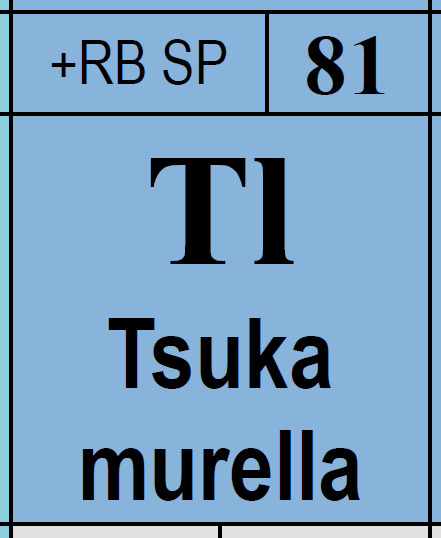#tsukamurella
Explore tagged Tumblr posts
Photo


Dr Warhol’s Periodic Table of Microbes
The Small Guide to Small Things
81. Tl. Tsukamurella
Microbes can be found pretty much everywhere, and Tsukamurella is no exception. The type species, Tsukamurella paurometabola, was initially isolated from bedbugs. There are currently around a dozen species. About half are environmental organisms, isolated from soil, sewage sludge, and a deep water (220 meters down) marine sponge. The other half are primarily opportunistic pathogens, most often associated with bloodstream infections and indwelling medical devices, as well as pulmonary infections.
A noteworthy feature of the Tsukamurella is that they have seriously long-chain carbon molecules in their cell walls (mycolic acids), ranging from 64 to 78 carbons, which are highly unsaturated with 2 to 7 double bonds. (That’s almost as long as the Mycobacterium, with up to 90 carbons.) The Tsukamurella are related to other organisms with mycolic acids in their cell walls such as Corynebacteria, Mycobacteria, and Nocardia. They form branching hyphae-like structures in culture.
This is a relatively new genus, established in 1988, which may not seem new to many people, but its 100 years “younger” than organisms like Staph and Strep. The microbes were named in honor of Dr Michio Tsukamura.
Tsukamurella cells are Gram positive straight to slightly curved rods that measure 0.5 to 0.8 microns wide by 1 to 5 microns long.
Get a beautiful science poster of The Periodic Table of Microbes at https://www.etsy.com/no-en/shop/WarholScience
#science#sciblr#microbiology#bed bugs#Gram positive#tsukamurella#Dr Warhol#WarholScience#Dr Warhol's Periodic Table of Microbes#Small Guide to Small Things#original content#nerdfigher#isbn 9780996145657#NSTA#ASM#STEM
20 notes
·
View notes